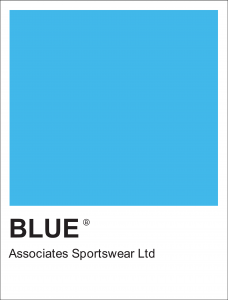In the fast-paced world of sportswear, efficiency and precision are paramount. One essential tool in the sportswear design and production process is the fashion tech pack. A fashion tech pack serves as a blueprint for garment manufacturing, detailing everything from materials and measurements to stitching and trims. However, despite its importance, creating a tech pack can be a daunting task, especially for those new to the activewear industry. In this blog post, we’ll explore five common mistakes to avoid when creating a fashion tech pack to ensure smooth production and impeccable results.

1. Incomplete or Inaccurate Measurements: One of the most crucial elements of a sportswear tech pack is accurate measurements. Without precise measurements, the garment may not fit properly, leading to customer dissatisfaction and increased production costs. Therefore, it’s essential to take meticulous measurements of every aspect of the garment, including length, width, and seam allowances. Additionally, be sure to specify whether measurements are taken flat or with stretch, as this can significantly impact the final fit of the garment.
It is also important to make sure a diagram is included in the tech pack to demonstrate where each measurement is taken from.
Also note that you need to take into consideration the selected fabric you want to produce the garment in and make sure the size of the garment allows for the stretch properties.
2. Lack of Detailed Design Specifications: A comprehensive tech pack should leave no room for interpretation. It should clearly communicate every aspect of the design, from the type of fabric and colour to the placement of trims, prints and zips. Including detailed sketches or reference images can help ensure that the manufacturer fully understands your vision. Additionally, provide information on any specific techniques or finishes required, such as embroidery or screen printing, to avoid any misunderstandings during production.
All prints and appliqués including trims should be drawn to scale with accurate measurements of the application and placement on the garment.
The design should have a front and back view and available in B&W and colour and if there are specific detailing you need to highlight, these should be blown up and explained with clear manufacturing instructions. The CAD design needs to be to scale and show all the details including stitching and construction methods.
3. Neglecting Fabric and Material Details: This is the most common mistake to avoid when creating a tech pack. We receive so many tech packs from clients that have used a designer to create their designs and tech packs, only to fine the fabric information is missing or a general description of the fibres are provided.
The designer clearly doesn’t have the resource to source the correct fabric and so expects the factory to source something suitable. The issue here is you have passed control of quality, cost, performance and consistency to the factory.
The process is similar to building a house and your architect wouldn’t allow “Jack the builder” to choose taps, kitchens, front doors, windows and roof tiles. You therefore shouldn’t allow the factory to do the same with your products.
The choice of performance fabric and materials can make or break a sports garment. The fabric dictates the stretch, performance, breathability, durability and quality of your garment, so you need to drive this.
Components, trims and labels should also be specified with nominated suppliers to guarantee the quality and consistency across the range.
4. Ignoring Production Constraints and Requirements: When creating a tech pack, it’s vital to consider the capabilities and limitations of the sportswear factory. Failure to do so can result in unrealistic expectations and production delays. Be sure to communicate any specific production requirements, such as minimum order quantities or lead times, upfront. Additionally, consider factors such as production techniques and machinery capabilities when designing the garment to avoid costly revisions later on. When we design sportswear and create the tech packs, we aways have the factory in mind so we make sure the skill base and machinery is suitable for the design.
5. Poor Communication and Collaboration: Effective communication is key to successful garment production. Yet, many tech packs suffer from poor communication between designers and the sportswear factory. To avoid misunderstandings and errors, establish clear lines of communication from the outset and maintain regular contact throughout the production process.
The quality of the tech pack is the starting block to this communication and the design and information needs to be clear and precise. The CAD designs need to be accurate and show all the details in B&W and full colour and include all aspects of the garment, including stitch types and any specific required construction methods.
Many quality factories will refuse to work with brands that supply poor executed tech packs without accurate CAD designs, graded size charts and nominated fabric suppliers as they perceive the communication will be too difficult compared to clients that are super precise when they create their tech packs.
In conclusion, creating a fashion tech pack requires careful attention to detail, clear communication, and collaboration. By avoiding these common mistakes and following best practices, you can streamline the sampling and production process, reduce costs, and deliver high-quality sportswear that meet or exceed your customers’ expectations. Remember, a well-executed tech pack lays the foundation for a successful sportswear collection, so invest the time and effort to get it right from the start.
If you require profession tech packs, please get in touch for a free quote.




